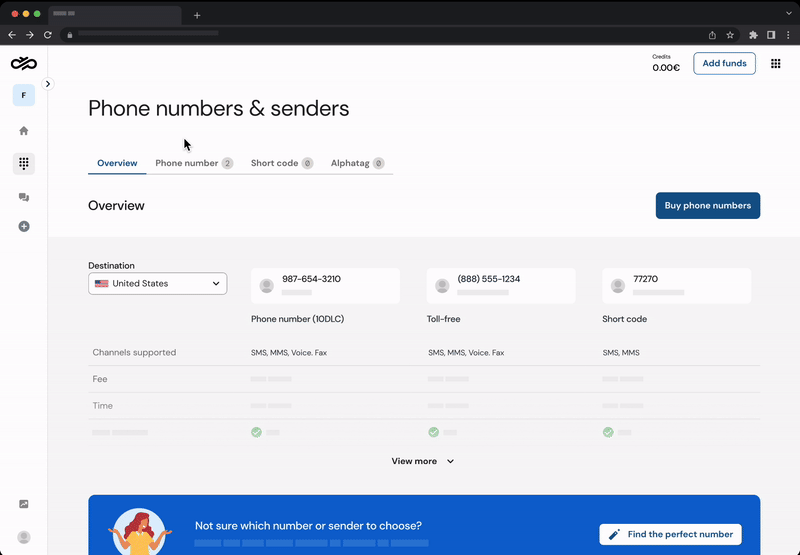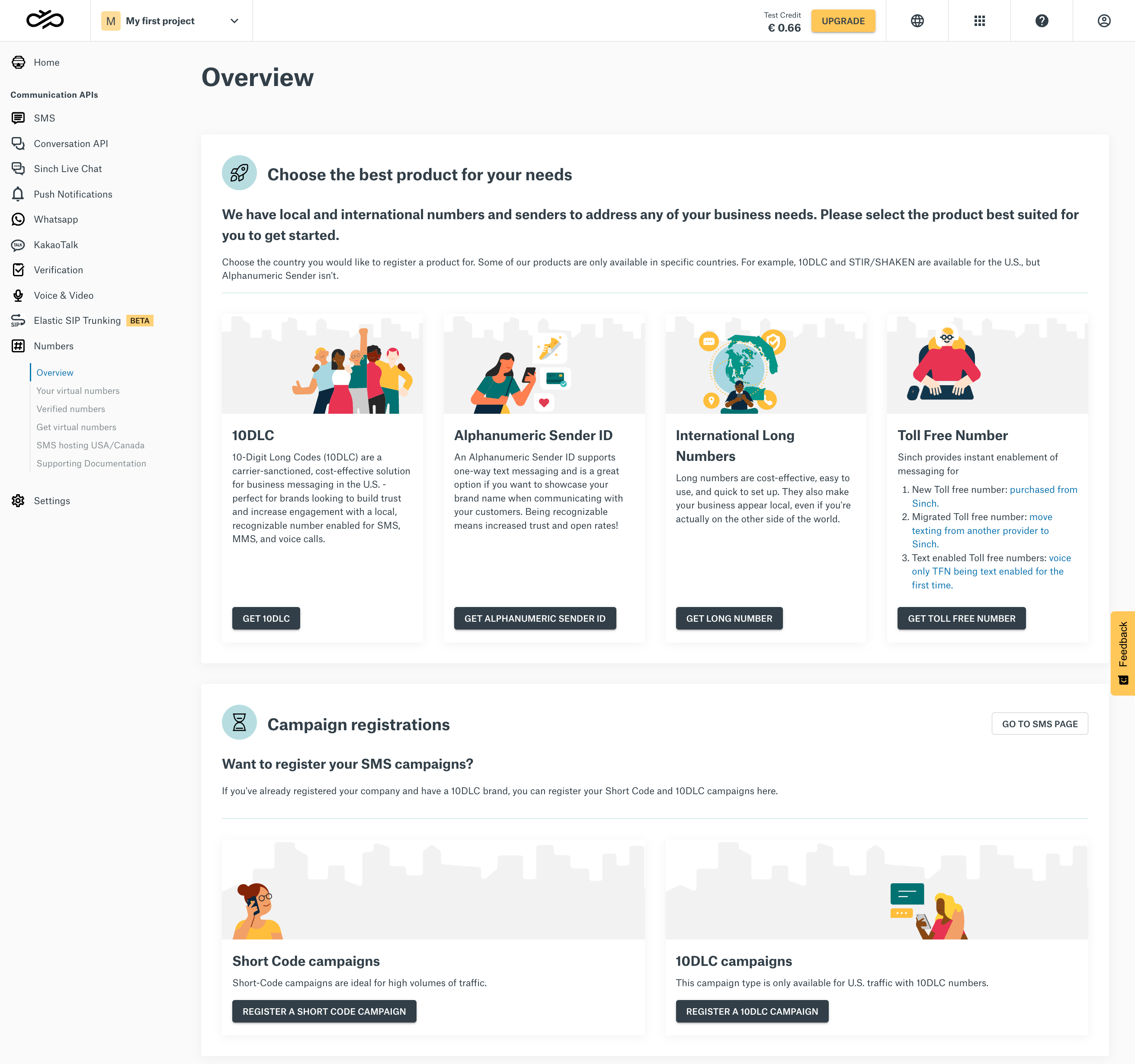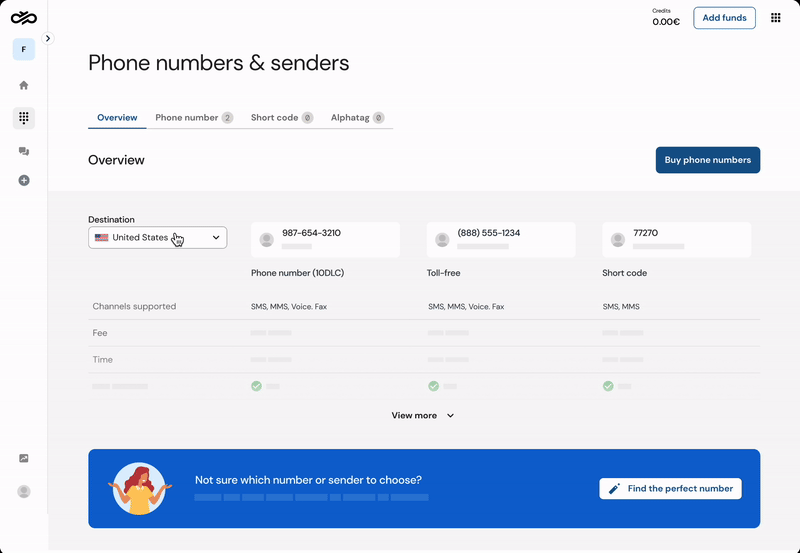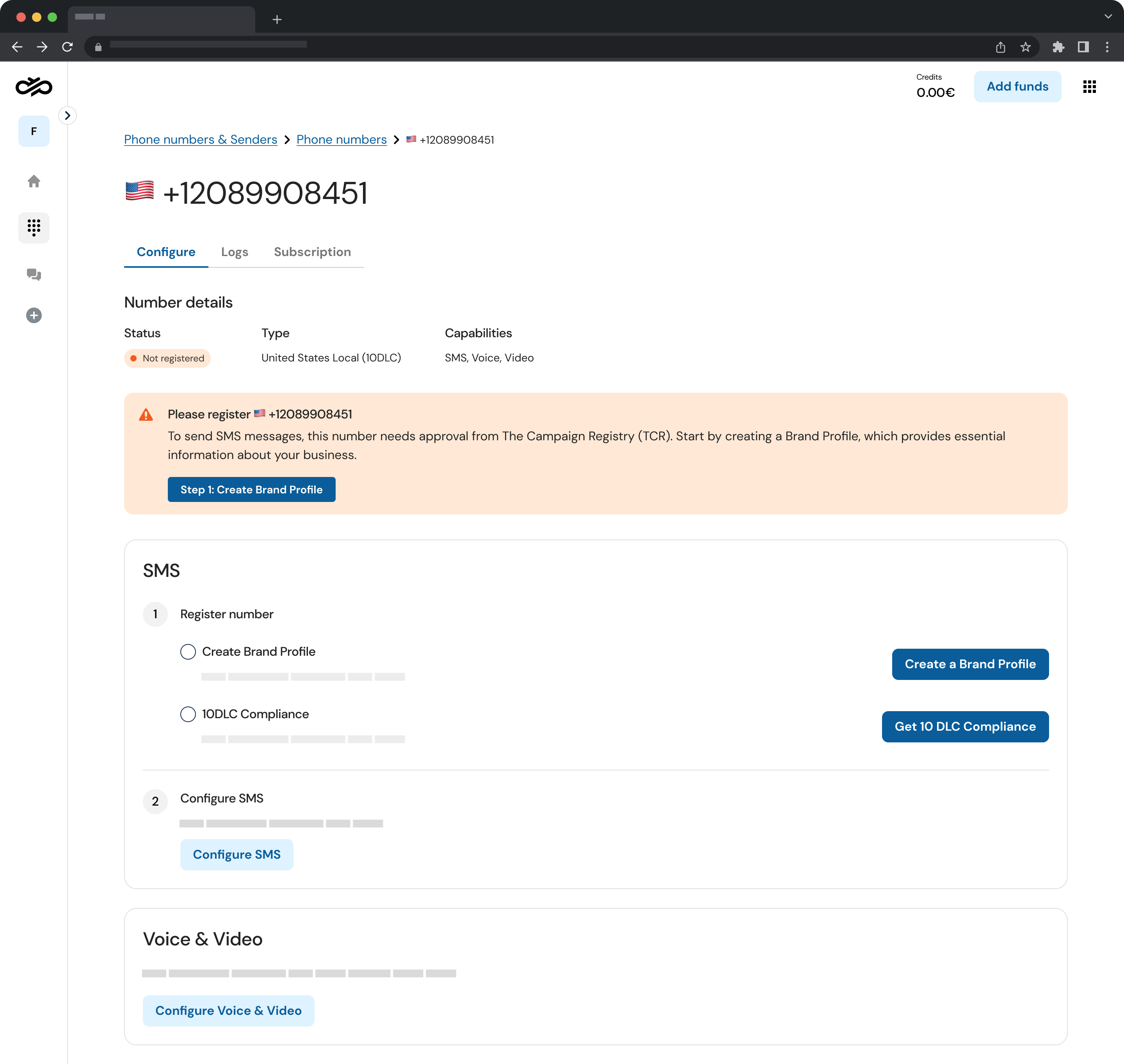Sinch (2024)
Defining the vision for numbers & senders
Sinch offers a large selection of phone numbers worldwide, essential for using our SMS API. However, the separate management of these numbers by different internal teams has led to a fragmented and inconsistent user experience.
Summary
As the UX Design Lead, I am working to make it easier for users to buy numbers and senders on our platform. I am collaborating with stakeholders using an iterative approach to explore and gather feedback on the vision. This is an ongoing project.
Part I: Understanding the current state
To use the SMS API, you must have a phone number. Different markets and number types, such as 10DLC, Toll-free, Short Codes, and Alphanumeric Sender IDs, each come with their own specific regulations and requirements. This complexity makes it challenging for users to understand which type of number they need and how to comply with the various regulations in different regions.
Different number type for SMS
This project started with a deep dive into research, blending stakeholder and user interviews, benchmarking, and synthesizing prior studies. From this, I uncovered key insights. To be mindful of your time, this case study will focus on the two most important findings:
Customers have a hard time understanding how messaging works
New and existing customers face a significant knowledge gap, particularly with telecom-related concepts. They struggle to understand which numbers or senders they should use for their specific needs, and the platform isn't providing them with sufficient guidance.

The steps to buy a local US number (also called 10DLC)
Poor navigation & broken journeys
Users need to navigate through multiple sections of the platform and provide detailed information about the company sending the SMS and how users consent to receive messages. The process doesn't feel seamless or intuitive. Even users who understand the steps struggle to find the right sections within the platform, making the experience frustrating and inefficient.
Quotes from user tests & interviews
Additionally, customers often contact account managers with questions about purchasing phone numbers consuming significant time. This distraction prevents them from focusing on strategic activities like developing client relationships, optimizing campaigns, and addressing complex customer needs.
Part II: How might we simplify the process to buy numbers with Sinch?
With the key research insights in mind, I began envisioning an improved journey to buy numbers. I sketched a high-level user journey focusing on the following key phases: finding the right number, understanding market regulations, buying the number, and getting approval to send SMS. Then, I prototyped various approaches to streamline and enhance this process. Please note that this work is still in progress, and the following designs are preliminary sketches, not final UI.
Goal 1: Centralized section for numbers & senders
After re-evaluating the current structure, I proposed a new information architecture to enhance the user experience. Currently, numbers and senders are scattered across multiple sections, making it difficult to get a comprehensive overview. By centralizing them in one section, users can easily manage all their numbers and senders within their account.

All number types together in one section
Goal 2: Simplifying complex telecom terminology
If you're a telecom pro, terms like 10DLC, Campaigns, and Alphanumeric Sender ID might be second nature. For the rest of us, they're a bit of a head-scratcher.

The current overview page does not effectively guide users in understaning what number type they need or explain the steps
To simplify these terms, I proposed using interactive tables for comparing number types and their capabilities, adding visual illustrations for clarity, and incorporating interactive guides that mimic the questions account managers ask. This approach aims to help customers easily find the perfect number type. Choosing the right number type depends on factors like the target country, message type (marketing, verification, alerts) and whether recipients need to reply.

GIF showing a table with all numbers types per region
Goal 3: Smoother process to register numbers
In telecom terms, a "campaign" means registering a number with operators. Operators need to know: 1) who is sending the messages and 2) what messages will be sent. This information is crucial for regulatory compliance and spam prevention. By using clear labels and step-by-step instructions, users can easily see if their number is ready to use and understand the actions they need to take.

My suggestion: Outline the steps required for registration in the detailed page for a phone number
Goal 4: Streamline information collection
Operators often ask for the same details about companies. Currently, customers must enter this information separately for each request, which is frustrating and time-consuming. To make things easier, we need to align the information collection processes. By creating a centralized "Brand Profile," we can store all this information in one place. This means that once a customer sets up their Brand Profile, they won't need to re-enter their details for each new request.
The customer creates a Brand Profile to register a 10DLC (local US phone number)...
...and later uses it to pre-fill the registration for another type of sender
Result
The goal of this project is to define a shared vision of how we want the user experience for buying numbers to be. This vision will foster cohesion and synergy across multiple teams within our organization through an iterative and collaborative process. It will guide us in making informed decisions that align with our larger goals throughout the research and design exploration. I've identified several key priorities:
- Optimize information architecture to support a smoother user journey.
- Bridge the knowledge gap by explaining the different types of phone numbers across various markets, and what users need to know about each type.
- Streamline information registration processes using reusable brand profiles for efficiency.
To experience this firsthand, you can try out the prototype below.
Next steps
Currently, we're at the early stages of this initiative; focusing on research, design exploration, and gathering feedback from stakeholders. Looking ahead, we'll also consider the needs of customers buying numbers for Voice APIs. These customers often require numbers in batch. Unlike SMS numbers, getting Voice numbers usually doesn't involve as much registration.
About Sinch
Sinch provides communication APIs and applications for smooth interaction between companies and their customers. Their solutions cover diverse communication channels including SMS, voice, video, and social media platforms. This enables businesses to effectively engage with their audience across multiple platforms and devices, ensuring enhanced connectivity and customer satisfaction. Learn more about Sinch.
